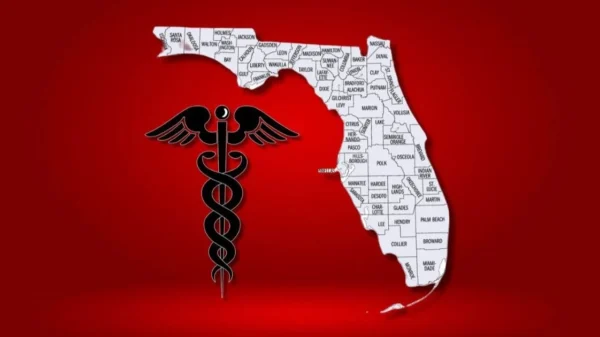We must keep pushing the boundaries of the possible to meet the realities of tomorrow. Florida has spent my entire lifetime chasing after its own growth. When I was a kid, there were little more than 3 million full-time residents making Florida the smallest southern state. We are now somewhere above 22 million full-time residents.
In Florida, our revenues, real estate growth, road capacities, enrollments in our private and public schools from PreK-12 to higher education, and our natural resource capacities become critical components in measuring the quality of our lives. How best to get a handle on all these variables while also building an even stronger foundation for the future of Florida? Current national trends lean towards continued growth for Florida as the appeal of freedom and high quality of life attract people seeking our lifestyle.
These times should be viewed as an opportunity for creative and innovative approaches to vexing public policy issues and also as an opportunity for policymakers to reflect upon what it is that is necessary to know to make real fiscal policy decisions benefitting the longer term. Unfortunately, the press of time constraints and the need to make fast decisions often limit the ability of lawmakers to stand back and evaluate options. The passing of time and constant growth seem to be two things that happen with or without our attempts to influence either, and yet we must get a handle on the pressing needs of tomorrow.
Meeting these challenges will require a trained, competent, high-tech workforce capable of meeting the science and medicine challenges of tomorrow and an instructional force; teachers and professors capable of advancing the sciences and enticing students to enter these complex fields. We currently face a massive shortage in both the sciences and in teachers qualified to fill our classrooms.
Meeting the professional and workforce needs as Florida grows will be a significant challenge facing the legislature in the coming decade. Stimulating the desire for learning and making a quality education available to all who seek knowledge should be a primary goal for Florida.
Is Florida ready to meet these challenges? Florida is short of the clinical settings and credentialed instructors to produce enough nursing and health-related professionals to meet the growing and changing demographics. This has been the case for a long time. Florida cannot produce enough math and science teachers at the secondary levels for our public and private K-12 schools. We produce fewer teachers in Florida’s post-secondary institutions now than in 2010. We have added more than three million citizens since then. How do we entice students to enter the classrooms of Florida, assisting us in teaching our workforce for tomorrow? How do we meet the needs of a growing senior population when allied health occupations remain open and available with not enough qualified personnel? It will take a concerted effort in addition to embracing the reality that these issues will not go away and keep Florida on the right track will require a long-term approach to public policy.
The declining enrollments in Florida’s education schools should serve as a canary in the coal mine for a brewing educational crisis. If we cannot put qualified teachers in front of every classroom in every community, we will lose ground. When I look at the website for the county school system of our capital city, I see that only 61 percent of students are proficient in math and 58 percent are in reading. It is not hard to see we have issues that need addressing. Too often, yesterday’s solutions planted the seeds for today’s problems. The solutions we develop today might avoid creating the problems of tomorrow.
Higher education institutions have ramped up enrollment for decades. Yet, Florida is not nearly finished as current growth patterns bring a net gain every day of new residents. Higher education is a critical factor in meeting the needs of Florida’s employers and meeting our critical healthcare and educational needs of tomorrow.
The Florida Chamber of Commerce has targeted having 60 percent of Floridians with either degrees or high-quality credentials by 2030, only eight years away. The results of higher education efforts –graduates ready for employment, business services, new knowledge and breakthrough research –all fuel prospering economies and are essential elements of attractive, vibrant and prospering communities. Armed with the weapons of low taxes, excellent geography, and growing markets, Florida can view investments in higher education as a tool for economic enhancement.
Higher education is an engine of economic growth and our institutions of higher education, private and public, are state-based assets. We must educate with the mindset that change is constant and re-educating is a needed component of our strategies. While it is true that college is not the only path to opportunity, it is evident that a lifetime of access to critical and better-paying employment does include continuous learning.
There are several emerging trends demanding both flexibility and adaptation. These include:
• The aging population and the growth of non-traditional students,
• The emerging importance of technology in instruction
• The need to understand other cultures and languages
• The weakening national capacity in math & science
• The societal need to boost access for upward social mobility
• The unmet demand for graduates in critical fields
• The need for research to reach the marketplace more rapidly
• The need to better blend higher education activities with economic needs
• The increased recognition of the value of a liberal education to foster creative thinking and develop the reasoning skills needed to meet the challenges of the future
Innovation and creativity often take a back seat to incremental adjustments and the tweaking of policy issues. Our economic future will have obstacles that Florida must overcome to stay competitive. A unified approach to making the best use of our institutional talents will do much to advance our state.


















